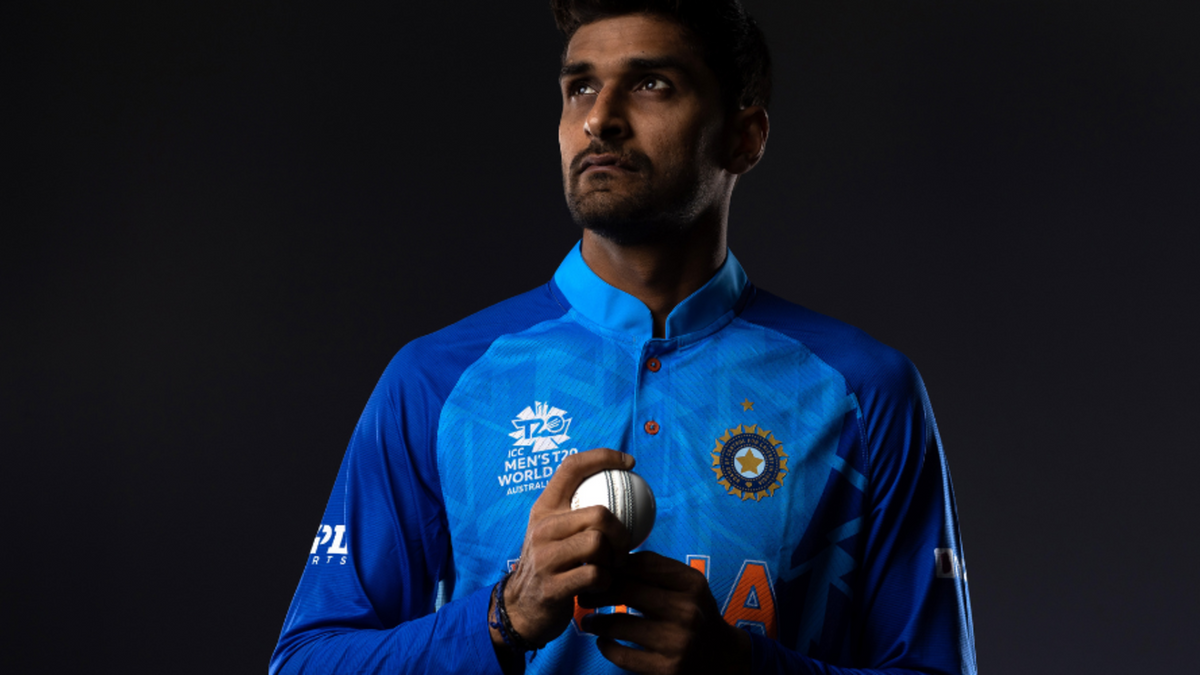
Deepak Hooda has not played a T20I since the Asia Cup, but with his skill-set unrivalled by most in India’s squad, his chance may come very soon, writes Shashwat Kumar.
A couple of days ago, India registered a sensational victory against Pakistan, largely due to Virat Kohli’s magnificent knock. While a win of that ilk can change the outlook of any side, especially at a T20 World Cup, it is equally important that India do not lose track of the flaws that they need to iron out.
One major quandary is their team balance. Against Pakistan, they opted for five specialist bowlers and Hardik Pandya, leaving them slightly short-handed in the batting department. But with Kohli batting superbly, that did not come into the equation a lot. Pandya’s brilliance with the ball also meant that Axar Patel and R Ashwin only combined to bowl four overs, conceding 44 between them on a pitch that offered them little.
This might not be a one-off situation. Pandya seems to have emerged from his injury woes, and looks capable of bowling four overs consistently. The pitches at this T20 World Cup have also aided his style of bowling. India may only have to effectively plan for four overs of spin.
In that scenario, it may make sense for them to include Hooda, who can bowl a couple of overs if required, and one specialist spinner. That specialist spinner can be any of Ashwin, Axar, and Yuzvendra Chahal, based on the conditions and suitable match-ups. Hooda is, by no stretch of the imagination, a frontline bowler. In the 169 T20s that he has played, he has bowled only 60 times. However, in those innings, he has bowled a total of 763 balls, roughly equating to 12.7 per innings.
His overall economy rate in T20 cricket stands at 7.76, indicating that he has performed the role of an emergency sixth bowler quite well. India may even throw Hooda into the deep end in the powerplay, where his 78 balls have gone for 7.46 an over. In T20Is, meanwhile, his six powerplay overs have gone at 5.33. Under Rohit Sharma, he has bowled thrice inside the powerplay: in other words, the Indian captain backs him to bowl an over or two. The way Pandya is bowling, Hooda may need to bowl a couple of overs at the most. And based on his overall T20 record, seems capable of taking up that mantle.
The bigger tilting scale in Hooda’s favour is that he is a specialist batter. His inclusion will provide them more batting security and give them the option of playing their four best bowlers based on the conditions. At the same time, he is likely to bat at No.6, a position where he has not enjoyed T20I success. At the same time, he strikes at 142 when batting at No.6. So, he can do a job, and possibly help India hold Dinesh Karthik back until the death overs. India may not be forced to play one of Ashwin or Harshal Patel (bowlers who bat) at No.8 because they will have seven specialist batters in their XI, including Hooda.
A batter like Hooda, who can also chip in with a few overs is a luxury, especially in an Indian team bereft of part-time bowling options. That said, it may not come to fruition at all. The top five looks settled and, barring injuries, is unlikely to change. They also seem inclined to play two specialist spinners, three fast bowlers and a pace-bowling all-rounder in Pandya.
Yet, if India were to turn to Hooda, he can lend the team the balance they have been craving, and it could possibly be a decision that defines India’s T20 World Cup campaign.
Bet365 will be Live Streaming all of the T20 World Cup matches direct to your iPhone, iPad or Android device, as well as desktop. This means that every T20 World Cup fixture will be available to bet365 customers wherever they are in the world.








